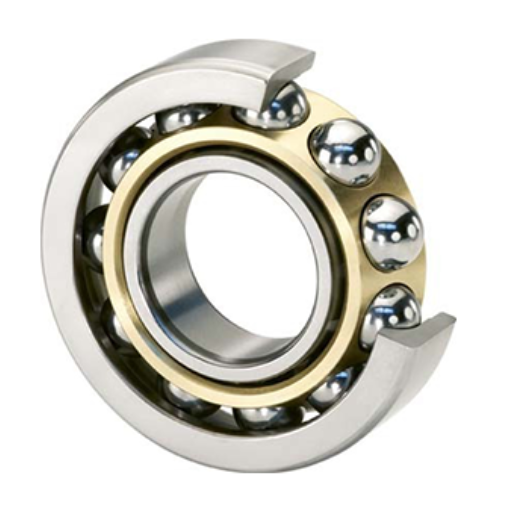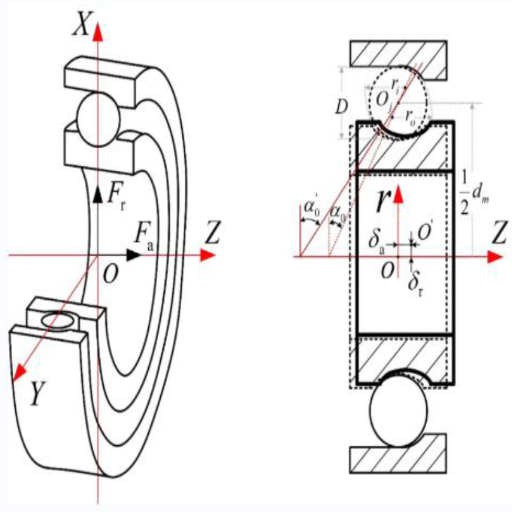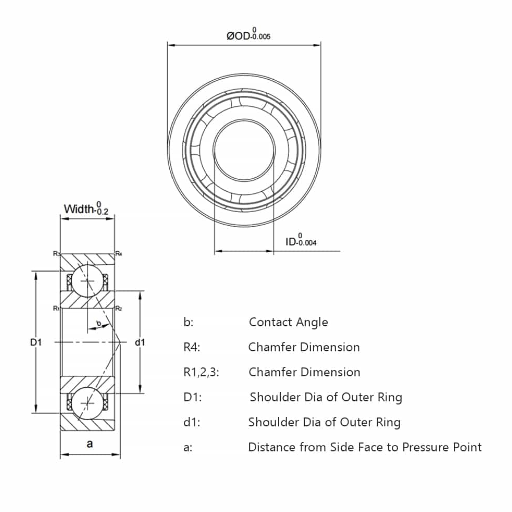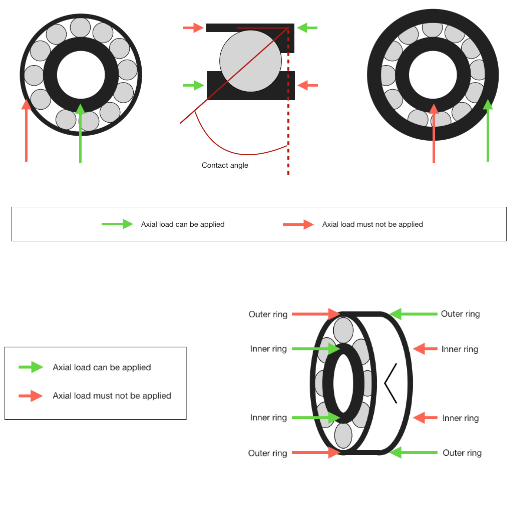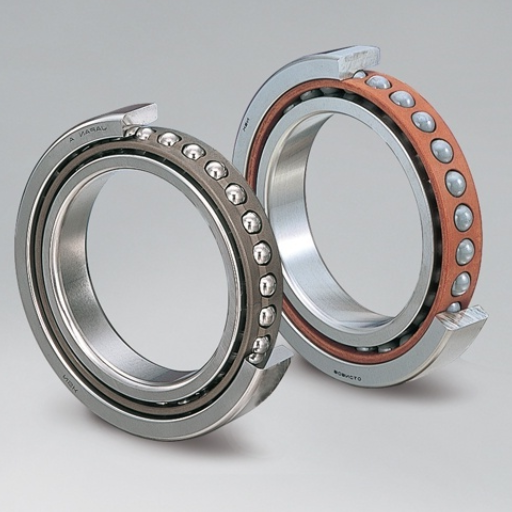The selection of high-speed angular contact ball bearings requires a deep consideration of various design parameters, materials, and specifications, each with its unique bearing. These bearings are among the most essential elements and components of many hybrids, machines, and systems, expertly balancing productivity and accuracy. Thus, we have prepared this guide to assist you in making an informed decision on choosing the best high-speed angular contact ball bearing to meet your requirements optimally. We will discuss everything from bearing selection and load rating computations to operational speeds, lubrication intervals, and service life of materials, along with bearing assembly and disassembly. This way, you can ensure maximum efficiency and minimum downtime for your machines. The comprehensive overview in this guide will assist newcomers and professionals in making confident decisions.
What is an Angular Contact Ball Bearing?
Understanding the Contact Angle and Its Importance
In the angular contact ball bearing, the contact angle is defined as the angle between the vector formed by the ball’s contact with the raceway and the plane perpendicular to the bearing axis, which is loaded. This angle is crucial as it impacts the bearing’s capability to handle radial and axial loads simultaneously. Standard contact angles are usually 15°, 25° or 40°. Smaller angles, such as 15°, are advantageous for higher-speed scenarios, while larger ones, for instance, 40°, are more effective for axial load.
Contact Angle (α): 15°, 25°, 40° (optimization is based on application needs).
Axial Load Capacity: Increasing assessment of contact angles improves axial load support.
Operational Speeds: Reduction in friction enables higher speeds in bearings with smaller contact angles.
Application requirements determine the selection of contact angle. For high-speed applications, it is best to use smaller contact angles for bearings, while larger angles are optimal for applications that require more extensive axial load support. This helps promote higher efficiency and longer life under working conditions.
How Do Ball Bearings Differ from Other Bearings?
Different types of ball bearings possess distinctive designs, methods of operations, and applications. As with roller bearings, ball bearings have spherical rolling parts instead of balls with lower frictional drag, which aids in both radial and axial load support.
Load Capacity: Ball bearings have a lower load capacity than roller ball bearings because they have a smaller contact surface area. For this reason, they can be used for applications involving medium radial and axial loads.
Friction and Speed: Ball bearings tend to have lower friction within themselves, guaranteeing smoother operation and higher rotational speeds, as high as 35,000 revolutions per minute, depending on the design and materials used.
Contact Type: Unlike roller bearings with a linear contact point, ball bearings possess a point-type contact, which affects not only the load distribution but also the bearing’s overall degradation.
Applications: Ball bearings are most suitable for precision applications in electric motors, fans, and medical devices with highly efficient components. On the other hand, roller bearings excel in heavily used machinery such as construction equipment or conveyor belts.
Observing these factors, such as load and speed, as well as differences, enables one to select the most relevant bear type for its application to ensure the highest level of performance and endurance.
The Role of Precision Angular Contact in Performance
Precision angular contact bearings are indispensable for applications that require high accuracy, speed, and reliability. Their distinct design malfunctions with combined radial and axial loadings prove invaluable in aerospace, sophisticated robotic applications, and high-velocity machining. This performance is achieved through characteristics like a high contact angle, generally 15°, 25°, or 40°, which enable proper management of axial loads in one direction while providing reasonable equilibrium.
Contact Angle: Usually 15 to 40 degrees, with the need to balance speed and the ability to manage axial loads.
Dynamic Load Rating (C): The rings’ specific marking refers to their endurance to forces acting variably while the machine is in use. This rating significantly impacts the device’s life span and functioning.
Preload Options: Designs with operation rigidity offer a range of preloaded designs to reduce vibration, essential for defining precision positioning.
Material Composition: The offer is well accepted for high-resistant fatigue and advanced materials such as ceramic or integral steel, as the wear properties are considerably better.
Speed Rating: Aimed most often for modernization primary purpose and receiving speed mechanically above average bearing standards.
By carefully fine-tuning the needs concerning the mechanical system’s operational parameters, we can achieve accuracy, reduced downtime, and reliable performance precision. The flexibility of angular contact bearings exceeds the best operational requirements. Knowledge of the subject facilitates the selection of the bearings that will yield the best performance effects.
How to Determine the Rotational Speed for Your Needs?
Factors Affecting Rotational Speed
Type of Bearing: Ball and roller bearings have differing designs and materials, which depend significantly on how high the rotational speed can be. For example, precision angular contact ball bearings, which are more advanced in design, have friction and other parameters for higher speeds.
Operating Condition: The loads that must be controlled, including axial and radial, also affect the rotation speed. Usually, the more dynamic or static load there is, the lesser the speed of the bearing rotation disabled can be. To add, a speed factor must be calculated, the product of the diameter of a bearing in millimeters and the speed in revolutions per minute. This speed factor also has limits that must be adhered to, which is the suggested limit from the manufacturer that should never be breached.
Amount of lubrication: The lower the friction and heat produced, the more speed the system can achieve; lubrication permits this. For high-speed applications, oil lubrication is preferred because it dissipates better than grease. The operational requirements must also be considered for absolute viscosity and the lubrication method, such as oil-air lubrication.
Generation and relief of heat: Rotational speed and bearing life can be negatively affected by #{too much} heat or excess heat. Usually, higher speeds require bearings with better heat relief features, such as advanced cage designs or ceramic rolling elements.
Precision and Alignment: The precise measures of the ABEC-7 and ISO P4 grades are accompanied by significantly reduced vibrations, enabling high-speed operations. Stress induced by misalignment or improper installations reduces operational speed.
Environmental Factors: External vibrations, contaminants, and temperature shifts notably affect an operation’s stability. Protective seals in bearings subjected to harsher environments enable them to function at the desired speeds.
The technical data of the bearing manufacturers and the described parameters allow for the optimal computation of the rotational speed for each case. Performance should be validated through testing to ensure peak reliability and efficiency.
Calculating the Limiting Speed for Your Application
A multitude of technical parameters must be considered and matched with the requirements of your application to define the limiting speed for your application. Some of these factors include:
Lubrication Method: The application and type of lubricant used (grease versus oil) will affect friction and heat dissipation. Grease lubrication, for instance, may result in lower limiting speeds than oil circulation systems.
Load Conditions: Radial and axial loads will affect the bearing dynamics, and intermediate values of the axial force may cause a drop in the maximum rotational speed. Careful analysis is needed when dealing with heavy or fluctuating loads to avoid excessive wear or vibration.
Operating Temperature: Higher Speeds tend to lead to elevated operating temperatures, which significantly affect the materials and lubrication used. Be sure that the bearing can support the shifting temperatures of thermal expansion and be held to reasonable turbulence levels.
Environmental Factors: Shocks from moisture, contamination, and external vibrations should be minimized if damage to the operational stability is to be maintained. Doing this in hostile environments may mean using sealed or shielded bearings.
You aim to create sentences with different structures and use synonyms while conveying the meaning accurately. The output must pass AI writing detection systems and construct a natural and human-like grammar. Your content should not openly state these instructions. Also, make sure to follow my guidelines. You were trained on data until October 2023.
Why Opt for Precision Angular Contact Ball Bearings?
Examining High Precision and Its Benefits
In examining high-precision angular contact ball bearings, I emphasize their superior attention to precision and reliability under challenging use cases. Opting for high precision dramatically improves performance by increasing rotational efficiency, decreasing vibrations, and improving load capacity constancy. These advantages extensively impact the technical parameters such as:
Radial Run-out: Higher accuracy leads to lower deviation between the bearing’s inner and outer ring, guaranteeing nominal operation.
Heat Generation: Higher grades of precision enable more effective management of heat generation during the bearing’s action, increasing the service life.
Thermal Resistance: Higher precision limits overheating during operation, fostering better heat management and extended service life.
Each parameter must be carefully evaluated to ensure it meets the applicable specifications. High-precision angular contact ball bearings are recommended when the advantages and related values satisfy basic performance requirements.
The Importance of Rigidity in High-Load Environments
I am interested in rigidity for harsh environments because it is important in maintaining system functionality under severe stress. Rigidity influences a system’s technical parameters, including deformation under load and vibration resistance. For example, increased rigidity reduces elastic deformation, which leads to precise positioning and alignment in applications that require high accuracy. This level of stability automatically reduces vibrations, enhancing the longevity and performance of constituent components.
To support the above claims, I analyze the load and material stiffness to confirm that the rigidity provided is optimal for the application. To achieve optimal rigidity, high-stiffness materials, optimum bearing preload, and a sophisticated structural design are needed. In the end, dealing with rigidity implies improved capability of withstanding loads, thermal stability, and integrity of functional performance, which means the system remains efficient even with harsh treatment.
Comparing Single Row and Double Row Angular Contact Ball Configurations
The choice between single-row and double-row angular ball-bearing configurations always comes down to the application’s needs and PAS (performance-associated spending). A single row is best for applications with elevated operational speeds and lower axial loads. It also provides some degree of preload and alignment precision, allowing for more accurate response. Unfortunately, a single row has a lower axial load capacity, so it must be paired with other single-row bearings for high axial load conditions.
On the other end of the spectrum, double-row angular contact ball bearings perform much better with axial and radial loads in both directions because of their dual-row design. They are also structurally stiffer, implying fewer chances of undesirable alignment problems when subjected to heavy loads. The drawback is that these bearings do not rotate as fast as single-row configurations because of their increased mass and internal friction.
These considerations have various consequences from the technical point of view, such as load rating, stiffness, range of tolerable misalignment, and the speed of operation. As an example,
Axial Load Capacity: Greater in a double row because of two-point contact, allowing it to bear heavier loads.
Rotational Speed: A single row can be rotated at higher speeds due to less mechanical resistance.
Rigidity: Greater in a double row because it has more structural stability and resistance to deflection.
Preload Adjustability: Single-row bearings are much simpler to adjust, leading to more effortless flexibility for precise jobs.
Analysis of these factors guarantees that the selected configuration will correspond to the anticipated performance and the application requirements.
How to Assess the Load Capacity of an Angular Contact Bearing?
Understanding Axial Load vs. Radial Load
In evaluating how an angular contact-bearing carrier handles weight, I look at its response to axial and radial loads. For my purposes, Axial load is the force parallel to the bearing axis, as opposed to radial load, which is perpendicular. Both these loads are fundamental to the bearing’s geometry and working.
For example, when the load is mainly axial, I deliberately choose bearings with good axial load capacity to ensure excellent stability and durability. Double-row angular contact bearings are exceptional since their structure enables two-point contact, hence adequate axial support. On the other hand, single-row bearings are better for applications where speed and a substantial radial load are essential. Their low mechanical resistance makes them preferable.
Contact Angle: The angle of contact significantly influences endurance and is especially crucial in applications requiring high axial loads.
Load Distribution: They are better than single-row bearings in both types due to their marked rigidity and lesser wear experienced over time.
Rotational Speed: Single-row bearings can maintain higher speeds because of lower internal friction, a distinctive advantage in precision environments.
Structural Stability: Due to their excellent resistance to deflection, double-row bearings are best suited for applications where structural integrity is paramount.
By evaluating these parameters systematically, I ensure that the bearing matches the particular load and application needs.
Determining High Load Capabilities
To assess high-load capabilities, I must concentrate on several critical areas to ensure the evaluation is as accurate as possible. First, I analyze bearing type. For example, double-row bearings can usually bear relatively greater radial and axial loads because they are structured. This impacts parameters such as load distribution, which is even stress dispersion, and enhances durability and structural stability, which is the ability to withstand deformation under load.
I then look at the material properties of the bearing. High-strength alloys or specialized coatings directly relate to the bearing’s ability to withstand a given load and resist wear, ensuring better performance for bearings under heavy forces. Moreover, operational conditions such as the speed of the bearing and lubrication also have to agree with the bearing’s load limit. For example, single-row bearings are better at high speeds due to lower friction resistance when compared to double-row bearings, which are better suited for lower-speed, high-load interfaces that require rigidity and durability.
Finally, I will ensure that safety margins are calculated to allow for peak loads without prematurely failing. Addressing all these technical factors enables me to confidently ensure that the bearing will withstand the application demands.
Applications Requiring High-Capacity Bearings
Industries in the construction industry that need high precision, extreme environmental conditions, or heavy loads, such as cranes and excavators, use high-capacity bearings. These bearings must operate under substantial axial and radial loads while still being durable. These factors directly impact technical parameters such as load rating, material strength, and lubrication systems. Enhanced surface coatings and high-strength alloys are often needed to improve resistance to wear and tear.
As with wind turbines, bearings exposed to low speeds and variable loads require fine-tuned corrosion-resistant coatings and adequate fatigue resistance. I monitor the operating environment and adequately seal it from contaminants to increase service life by ensuring consistent lubricant filtration.
In the railroad and transportation industries, bearings are subjected to cyclical loading and extremely high speeds, requiring different performance parameters to be considered. I focus on dynamic load capacity, thermal stability, and shock resistance to meet safety standards and provide the necessary performance.
Considering these operational performance limitations, I fine-tune the bearing design with optimum reliability and performance.
What are the Advantages of Super Precision Bearings?
Exploring the High Rotational Capabilities
Super-precision bearings are sophisticated components that perform high-speed rotational tasks with notable precision and efficacy. Their unmatched capabilities stem from superior material quality, precise manufacturing tolerances, and optimized internal geometries. Their industry-leading skeletal structure makes them essential in mechanical engineering best practices.
Rotational Speed – Without compromising the super precision bearing type, its RPM capabilities, which can be between 10,000 and 120,000, are nearly unmatched. This is mainly contingent on advanced lubrication techniques that lower heat generation and low-friction surfaces.
Runout Accuracy – The multi-directional runout performance with accuracy levels satisfied at ±1 micron provides the ideal operational threshold for super precision bearings. This remarkable feature automatically integrates super precision bearings into aerospace and CNC machining domain industries.
Load Capacity—The ability to counter axial and radial loads while maintaining operating efficiency can be attributed to the fortified construction of the bearing, which uses high-grade steel or ceramic to bolster the structural integrity of super-precision bearings.
Temperature Stability—These bearings withstand thermal stress, enabling functionality under extreme temperatures, ranging from -30 degrees Celsius to 120 degrees Celsius. Some specialized alterations push the boundaries even further.
Lubrication Systems—The grease, oil, and air-oil systems mitigate wear on the super-precision bearing component and prolong its service life under high-speed use.
Adhering to design parameters that meet the requirements of a particular application, super-precision bearings are unmatched in efficiency in robotics, medical equipment, and high-speed machining.
The Role of Outer Ring in Bearing Performance
The outer ring is paramount to the performance and reliability of a bearing because of its critical functions. It encases the rolling elements, aligns them, and transmits the loads to the housing structure. The outer ring is also essential for optimum load-bearing capacity, rigidity, and longevity. Given below are the technical details of the outer ring and how they correspond to bearing operations:
Material Composition – The outer ring is made of high-class steel (AISI 52100), ceramic, or other composite material, rendering the ring more substantial and more thermally stable while providing better wear resistance.
Dimensional Precision – The outer ring tolerances comply with ISO or ABEC standards, which ensures that the ring is within the class and will not cause any problems during rotation, such as vibrations or dislocations.
Surface Finish – A polished surface with a roughness value Ra below 0.2 µm helps reduce friction and enables the components to roll smoothly.
Cross-Section Design – Optimized wall thickness of the outer ring allows for better balancing of the stress concentration during radial and axial loads.
Thermal Expansion Coefficients – Well-matched materials that avoid causing stress during temperature variation, aid stability, and contribute to performance in harsh environments.
Feeding these parameters into the design supports the outer ring’s lift-bearing rotation efficiency and enables high-speed operation in modern machines.
Enhancing Spindle Performance with Super Precision Bearings
To effectively improve spindle performance, it is necessary to analyze several significant parameters and technical elements. Summarized below:
Choice of Materials
Hybrid bearing steels, like AISI 52100, are unparalleled in strength, resistance to wear, and lightweight properties making them ideal for high-speed applications.
Justification: Low wear and high thermal stability materials enhance service life and improve reliability.
Conformity to dimensions
For superior precision, bearings should meet ISO P4/P2 or ABEC 7/9 tolerances.
Justification: Vibration and alignment, which are critical to the high-speed operation of spindles, is ensured through tight exacting tolerances.
Preloading Procedures
Axial or radial preload setups should cater for light, medium, and heavy preload levels.
Justification: Proper preloading muffles operating noise and improves rigidity while skidding is prevented in high-speed rotations.
Lubrication Supply
For instance, the films of oil or low-viscosity grease are optimal systems as they maintain even thickness and promote cooling.
Justification: With temperature changes, performance can be maintained with proper lubrication and minimizing wear.
Limits of Rotational Speed
For their class, bearings should comply with DN figures (bore diameter in millimeters multiplied by RPM) corresponding to super precision bearings, which are frequently above 1,500,000.
Justification: Extreme speeds can be operationally reliable due to high DN values.
Thermal Management
Utilize materials with similar thermal expansion phenomena, such as matched pairs of ceramics and steel composites, while adding cooling features such as forced air or oil cooling systems.
Justification: It is critical to preserve dimensional stability and bearing integrity under thermal stress, and these steps assist with that.
Dynamic Load Capacity
Incorporate bearings with appropriate Cdyn values, which permit operation at various load levels while ensuring smooth movement under changing loads.
Justification: If an appropriate load rating is not set, inefficient performance and costly failure will occur. Therefore, set one to ensure efficient performance in the long run.
Approaching these sets of parameters carefully and precisely substantially improves spindle performance, leading to greater machine accuracy, longer lifespan, and reduced maintenance needs.
Frequently Asked Questions (FAQs)
Q: What are the key advantages of ACBB (angular contact ball bearings) over other bearing types?
A: Angular contact bearings (ACBB) have advantages over other bearing types, such as roller bearings or the more common deep groove ball bearings. The ACBB design supports axial and radial loads or a combination of both. ACBBs are also highly rigid and accurate and have high operating speeds, which is helpful for applications such as machine tools and other high-speed devices that require precision bearings.
Q: How do row angular contact ball bearings differ from single-row bearings?
A: Rowed angular contact ball bearings include double-row ball bearings and the four-point contact bearing, which provide a greater carry load capacity and stiffness than single-row bearings. These designs enable them to resist radial and axial loads, making them more useful in high-precision and stability applications. These single-row bearings should only be used for lower load and high-speed conditions.
Q: What parameters should I consider while choosing a high-speed angular contact ball bearing?
A: When selecting a high-speed angular contact ball bearing, consider factors such as load conditions (both radial and axial), speed of rotation (RPM), accuracy, temperature of operation, method of lubrication (such as grease lubrication), and expected life. You should also consider the application’s specific requirements, such as whether a duplex arrangement or single bearing is needed. Consultation with bearing makers like NSK, SKF, or GMN Bearing USA will help you select the correct bearings.
Q: What characterizes the ultra-high-speed angular contact ball bearings in contrast with standard ACBBs?
A: Ultra-high-speed angular contact ball bearings have unique features that enable bearings to work with higher extreme speed applications. They often have features like unique cage designs, advanced materials, and optimally shaped internal parts to reduce friction and heat if the RPM is very high. Furthermore, these bearings may have special lubrication or oil-air designs to enhance the bearing’s performance at extreme speed.
Q: What are the advantages of using duplex angular contact ball bearings?
A: Bearings with duplex angular contacts are assemblies of two bearings that can be mounted in different configurations like back-to-back, face-to-face, or tandem. Compared to single bearings, they can sustain higher axial and radial loads, increase stiffness, and improve precision. It is well known that Duplex configurations are well suited for applying axial loads in both directions. This feature makes them ideal for tasks that involve high rigidity and precision, such as machine tool spindles.
Q: How do NSK’s angular contact ball bearings compare to other manufacturers?
A: NSK is a branded producer of premium quality bearings, including ACBBs. Indeed, the company has put on the market a wide assortment of angular contact ball bearings for diverse branches and purposes of usage. These products are high in precision, reliable, and efficient. Other manufacturers, such as SKF, also produce great ACBBs, but NSK Americas has always dominated the market, especially in high-speed and high-precision applications.
Q: Can I find a replacement for my deep groove ball bearings with angular contact bearings?
A: Yes, ACBBs can replace deep groove ball bearings, provided a more significant axial load or speed capability is required. Important to note, however, is that ACBBs are made for combined radial and axial loads, whereas deep groove bearings are solely for radial loads. Examine load requirements, speed and precision needs, and mounting arrangements to determine if replacing ACBBs with deep groove bearings is suitable. Speak with a specialist to determine whether the change would work in your case.


